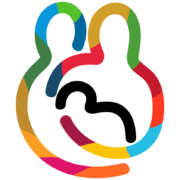Breast-feeding Protects against Arsenic Exposure in Bangladeshi Infants
Fängström B, Moore S, Nermell B, Kuenstl L, Goessler W, Grandér M, Kabir I, Palm B, Arifeen SE, Vahter M.
Environ Health Perspect. 2008 Jul;116(7):963-9.
Abstract
BACKGROUND: Chronic arsenic exposure causes a wide range of health effects, but little is known about critical windows of exposure. Arsenic readily crosses the placenta, but the few available data on postnatal exposure to arsenic via breast milk are not conclusive.
AIM: Our goal was to assess the arsenic exposure through breast milk in Bangladeshi infants, living in an area with high prevalence of arsenic-rich tube-well water.
METHODS: We analyzed metabolites of inorganic arsenic in breast milk and infant urine at 3 months of age and compared them with detailed information on breast-feeding practices and maternal arsenic exposure, as measured by concentrations in blood, urine, and saliva.
RESULTS: Arsenic concentrations in breast-milk samples were low (median, 1 microg/kg; range, 0.25-19 microg/kg), despite high arsenic exposures via drinking water (10-1,100 microg/L in urine and 2-40 microg/L in red blood cells). Accordingly, the arsenic concentrations in urine of infants whose mothers reported exclusive breast-feeding were low (median, 1.1 microg/L; range, 0.3-29 microg/L), whereas concentrations for those whose mothers reported partial breast-feeding ranged from 0.4 to 1,520 microg/L (median 1.9 microg/L). The major part of arsenic in milk was inorganic. Still, the infants had a high fraction (median, 87%) of the dimethylated arsenic metabolite in urine. Arsenic in breast milk was associated with arsenic in maternal blood, urine, and saliva.
CONCLUSION: Very little arsenic is excreted in breast milk, even in women with high exposure from drinking water. Thus, exclusive breast-feeding protects the infant from exposure to arsenic.


